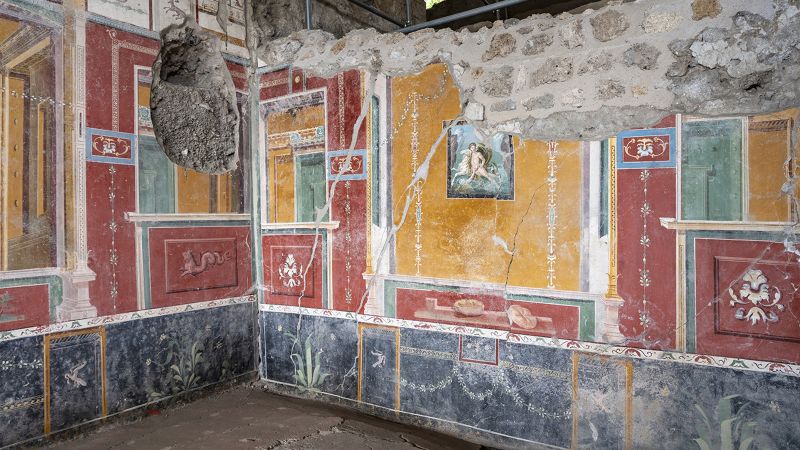In 79 AD, the ancient Roman town of Pompeii faced a catastrophic event that would forever freeze the lives of its inhabitants in time. Recent archaeological findings have shed light on the tragic moments experienced by four individuals, one of whom was a child, during the catastrophic eruption of Mount Vesuvius. These excavated remains were discovered in the House of Helle and Phrixus, a structure named after a mythological fresco found within its walls. This research, published in April in the E-Journal of the Pompeii Excavations, indicates how the residents attempted to shield themselves from the volcanic fallout.
As the volcano erupted, it released destructive gases and torrential ash into the atmosphere. This lethal mixture led to the slow suffocation of many Pompeians. The city was enveloped in ash and volcanic debris known as pumice, which masterfully preserved the last moments of its victims for centuries. The evidence indicates that during this darkness, the victims barricaded themselves in the bedroom using furniture from their home, desperately trying to seek shelter amidst the chaos.
The excavation efforts in the House of Helle and Phrixus have provided a poignant glimpse into the lives of those who perished within its walls. Gabriel Zuchtriegel, director of the Archaeological Park of Pompeii, articulated the duality of beauty and fragility that resonates from exploring the ruins of Pompeii. The home, undergoing renovations at the time of the disaster, showcases the tragic irony of its decorative frescoes, which envisioned escape and freedom but ultimately became a backdrop for horror.
The research team’s extensive excavation revealed various spaces within the house, including an atrium complete with a water basin, an elegantly adorned banquet hall, and a bedchamber. As the eruption escalated, small fragments of volcanic debris cascaded down into the interior through a central opening, causing the inhabitants to rush to barricade themselves in the bedroom. However, the oppressive environment and chaos eventually forced the residents to retreat from their attempts to escape, leading to their tragic demise in the banquet hall.
The study noted that the gas clouds, laden with debris from the eruption, likely led to the collapse of walls and the deadly rush of volcanic material into their home. The researchers painstakingly created a cast of the bed that had been used to barricade the door, preserving the final actions of the victims. This isolated scene of despair reflects not only a singular incident but also serves as a broader reminder of the panic experienced by many in Pompeii, as they sought refuge from the impending disaster.
Zuchtriegel emphasized the significance of these excavations, revealing how many residents sought cover in smaller rooms, believing they would be safer than outdoors. The desperation of those trying to hide is mirrored in the stories of victims from other homes, such as the House of the Painters at Work and the House of the Thiasus, who barricaded themselves in similar ways, only to be ultimately trapped as accumulation of ash and debris obstructed their escape routes.
Interestingly, the art adorning the House of Helle and Phrixus reflects a mythological narrative that echoes the fate of the victims within its walls. The fresco portrays Phrixus and his sister Helle’s attempt to escape peril, perhaps mirroring the aspirations of those who once lived there, who hoped for survival amidst their own calamity.
Zuchtriegel elegantly articulated this juxtaposition of aspiration and ruin, drawing parallels between the mythology and the stark reality faced by the Pompeians. The discoveries at this location extend beyond the human remains; a wealth of artifacts such as bronze amulets and amphorae reveal sophisticated tastes and lifestyles, reminding us of the rich cultural fabric of Pompeii that met an abrupt end. Each home in Pompeii tells a unique story, emphasizing the need to remember not just the loss and destruction, but also the hope and aspiration that characterized its ancient residents.
In summary, the findings from the House of Helle and Phrixus provide profound insights into the human experience of those tragic moments during the eruption of Mount Vesuvius, illustrating the intertwining narratives of art, mythology, and everyday life against the backdrop of a catastrophic event.












